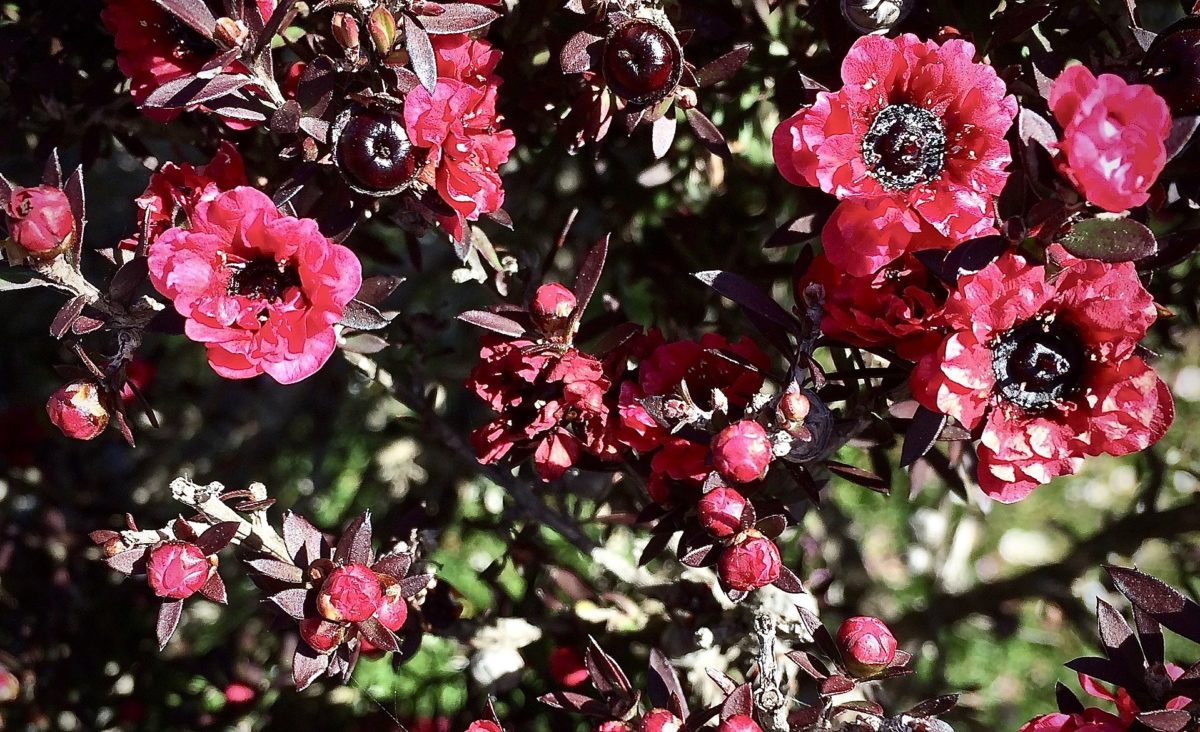Three years into the Beyond Myrtle Rust research programme, Manaaki Whenua reports its researchers are moving into a key phase. Studies to understand the ecosystem impact of the disease have produced a substantial body of data, and researchers are now heading to the genetic laboratory, and to analysis and reporting
Senior Researcher Dr James McCarthy says the role that some Myrtaceae species, such as ramarama, play within a forest ecosystem is largely unknown.
“Unless you know how Myrtaceae species contribute to the functioning of New Zealand forests, you don’t know what the impact will be if we start to lose them.”
James says very little was known about some of New Zealand’s 28 native Myrtaceae species, 27 of which are endemic, before myrtle rust appeared in the country.
“Pōhutakawa, mānuka and kānuka are the big ones we are relatively familiar with, but ramarama for example is a common nursery plant that no-one really knew much about in native settings.”
Myrtle rust, an invasive disease caused by the fungal pathogen Austropuccinia psidii, originally reached Australia and then was wind-blown across to New Zealand, arriving in 2017. The two big components of Manaaki Whenua’s study include microbiome research as part of a disease assessment in mānuka patches north of Auckland, and a survey for microorganisms across large transects of ramarama in the forests of Mt Taranaki.
“In the mānuka patches we are looking at whether there are any fundamental differences in ecosystem processes between planted and natural stands. At this point, mānuka hasn’t really been badly affected but there is always the potential for the disease to change, so it is important to understand these ecosystems, especially since so much is being planted for the honey industry.”
Because the fungus reproduces sexually, resistance among New Zealand’s Myrtaceae may change.
“It’s the reason we do need to keep researching it,” says James.
The Auckland mānuka study includes work on the plant microbiomes.
“We are studying whether the bacteria and fungi associated with these plants might help them fight off myrtle rust, or if any combination of these microbes could help make them more resistant,” notes James.
“If the plants’ microbiome does create some defence against the disease, that could be used to help control the disease.”
The second trial is analysing ramarama in Taranaki, specifically whether disturbed populations of the trees are more heavily infected.
“Do populations close to the edges, where the forest may be less intact, have more infections than those in the forest interior?” asks James.
“Do we see lots of myrtle rust on ramarama because we tend to travel along tracks where the forest is less natural, and where the disease might have more opportunities to infect? Might populations in more pristine forests be infected less?”
Work on Beyond Myrtle Rust has been strongly collaborative and James has praised the skill sets Scion, Plant & Food Research and Manaaki Whenua researchers have brought to the programme.
The work underway has seen New Zealand take a lead in myrtle rust research, with a request from Australia for Kiwi representation on a new working group to address the increasing build-up of inoculum levels in the environment.
“New Zealand is in a more fortunate position than Australia,” says James.
“Of the almost 6,000 different Myrtaceae species found globally, Australia has over a quarter of them, while we have only 28. It’s easier for us to keep an eye on 28 species in a smaller country.
“Unfortunately, it can take years before the impacts of myrtle rust are realised. The disease only affects soft, young plant tissue, with the plant becoming immune once it gets hard or woody. However, because of this, it can be a while before it’s noticeable that a plant hasn’t produced any seeds or flowers.
“New seedlings that emerge from the forest floor can be affected immediately. “It’s an ecosystem-level issue because old trees are dying without new ones growing to replace them.”
Myrtaceae are now known to be an important family in our forests, but the final outcomes of the research are at least 18 – 24 months away.
Source: Manaaki Whenua












